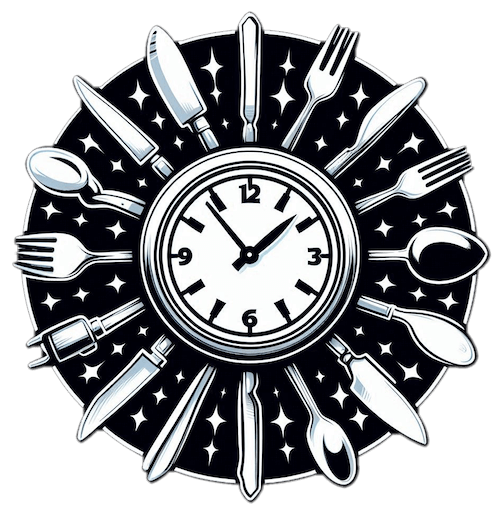Calculate for FREE the hours you need to know for your intermittent fasting cycle to end, easily with a simple fasting clock.

How to calculate intermittent fasting: all you need to know
Intermittent fasting is a popular practice in which you alternate between periods of eating and periods of fasting. This approach can help reduce caloric intake and improve metabolic health, among other benefits. But how is intermittent fasting calculated? In this article, I’ll explain everything you need to know to implement this practice correctly.
What is intermittent fasting?
Before explaining how to calculate intermittent fasting, it is important to understand what it is. This fasting involves limiting food intake for certain periods of time, alternating with periods of normal eating. There are several forms of intermittent fasting, which include:
- 16/8: 16-hour fasting, followed by an 8-hour feeding window.
- 24-hour: A full fasting day, followed by a normal feeding day.
- 5:2: Five days of normal feeding, followed by two days of fasting (limiting caloric intake to 500-600 calories).
There are many variations of fasting but one of the more popular is alternate day fasting,
Why do intermittent fasting?
Intermittent fasting can have several health benefits, including:
- Weight loss: It can help reduce total caloric intake, which can lead to weight loss.
- Improved metabolic health: May improve insulin sensitivity and metabolic function.
- Reduced inflammation: May help reduce inflammation in the body, which has been linked to several chronic diseases.
How to calculate intermittent fasting?
Intermittent fasting can be calculated in several ways, depending on the length of the desired fasting period. Some common methods are described below:
16/8 method
- Choose an 8-hour window for feeding, such as 12:00 p.m. to 8:00 p.m.
- Fasting for 16 hours, such as from 8:00 p.m. to 12:00 p.m. the next day.
24-hour method
- Choose a day to fast completely, such as Monday.
- The next day, eat normally.
5:2 method
- Eat normally for five days a week.
- Limit caloric intake to 500-600 calories for two days of the week.
Table: weight loss with intermittent fasting days
| Fasting days | Weight loss (kg) | Weight loss (lbs) |
|---|---|---|
| 1 day | 0,5-1 kg | 1,1-2,2 lbs |
| 2 days | 1-2 kg | 2,2-4,4 lbs |
| 3 days | 1,5-3 kg | 3,3-6,6 lbs |
| 4 days | 2-4 kg | 4,4-8,8 lbs |
| 5 days | 2,5-5 kg | 5,5-11 lbs |
| 6 days | 3-6 kg | 6,6-13,2 lbs |
| 7 days | 3,5-7 kg | 7,7-15,4 lbs |
It is important to note that the amount of weight lost during intermittent fasting depends on several factors, such as the amount of calories consumed during the feeding period, the level of physical activity and individual metabolism.
In addition, weight loss during fasting may be temporary and can be regained once normal eating is resumed.
It is important to talk to a healthcare professional before starting any fasting plan to make sure it is safe and effective for you.
How to get started with intermittent fasting?
If you are interested in trying intermittent fasting, it is important to do it safely and effectively. Here are some tips for getting started:
- Consult with a health care professional: If you have any medical or nutritional concerns, it’s important to talk to a health care professional before starting intermittent fasting.
- Start gradually: If you are new to intermittent fasting, it is advisable to start with shorter periods and gradually increase the length of the fast.
- Be sure to eat healthy, balanced meals during the feeding periods to get the nutrients you need.
- Drink enough water: It is important to stay hydrated during intermittent fasting, so be sure to drink enough water during fasting and feeding periods.

What can be consumed during fasting?
During intermittent fasting, certain liquids and low-calorie foods are allowed. Here is a table describing what can be taken during intermittent fasting:
| Drinks allowed | Food allowed |
|---|---|
| Water | Coffee and tea without sugar |
| Coffee and tea without sugar | Bone or vegetable broth |
| Bone or vegetable broth | Pickles |
| Calorie-free beverages, such as diet sodas | Lemon juice diluted in water |
| Lemon juice diluted in water | Apple cider vinegar diluted in watera |
| Apple cider vinegar diluted in water | Sugar-free chewing gum |
It is important to remember that even these options allowed during intermittent fasting can affect insulin and blood glucose levels, so care should be taken when consuming them.
How many meals can we eat during the day?
The number of meals eaten during the day may vary depending on the type of intermittent fasting plan being followed. Some people opt for 16/8 fasting, which involves eating during an 8-hour window and fasting for 16 hours. In this case, two or three meals may be eaten during the eating window.
Others may opt for the 5:2 fast, which involves eating normally for five days a week and reducing caloric intake to 500-600 calories for two non-consecutive days of the week. In this case, two small meals can be eaten during the low-calorie days.
There are also fasting plans that involve a full day of fasting followed by one or two days of normal eating. In this case, one or two meals may be eaten during the feeding days.
It is important to remember that during the feeding period, healthy and balanced food choices should be made to maximize the benefits of intermittent fasting. In addition, you should speak with a healthcare professional before beginning any intermittent fasting plan to ensure that it is safe and effective for you.
FAQs
Is intermittent fasting safe?
Yes, fasting is safe for most healthy people. However, it is important to talk to a health professional before starting any fasting plan to make sure it is safe and effective for you.
How long should I fast during fasting?
The length of time to fast can vary depending on the intermittent fasting plan you choose. Some plans involve fasting for 16 hours and eating for the remaining 8 hours of the day, while others involve fasting for 24 hours once or twice a week. It is important to choose a plan that is safe and effective for you and to talk to a health professional before you begin.
Can I drink fluids during intermittent fasting?
Yes, you are allowed to drink water, tea, coffee and other non-caloric beverages during fasting. However, calorie-containing beverages, such as soft drinks and juices, should be avoided during the fasting period.
Can I exercise during the fast?
Yes, exercise is allowed during fasting. However, it is important to make sure to stay hydrated and not overdo exercise during the fasting period.
Can I follow my intermittent fasting plan when I go out to dinner or have social events?
Yes, you can follow an intermittent fasting plan during social events and dining out. However, it is important to plan ahead and make healthy, balanced food choices during the eating period.
Sources
Here is a reference bibliography for the article on intermittent fasting:
- Varady, K. A. (2011). Intermittent versus daily calorie restriction: which diet regimen is more effective for weight loss?. Obesity reviews, 12(7), e593-e601.
- Patterson, R. E., Laughlin, G. A., Sears, D. D., LaCroix, A. Z., Marinac, C. R., Gallo, L. C., … & Villaseñor, A. (2015). INTERMITTENT FASTING AND HUMAN METABOLIC HEALTH. Journal of the Academy of Nutrition and Dietetics, 115(8), 1203-1212.
- Intermittent Fasting: Is the Wait Worth the Weight? Mary-Catherine Stockman, RD, LDN,1 Dylan Thomas, MD,1 Jacquelyn Burke, MS, RD,2 and Caroline M. Apovian, MD1
- Fasting and refeeding differentially regulate NLRP3 inflammasome activation in human subjects published on Journal of Clinical Investigation
